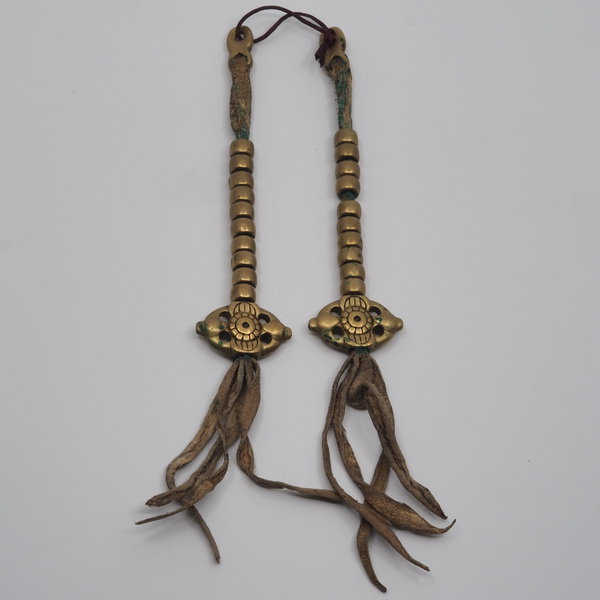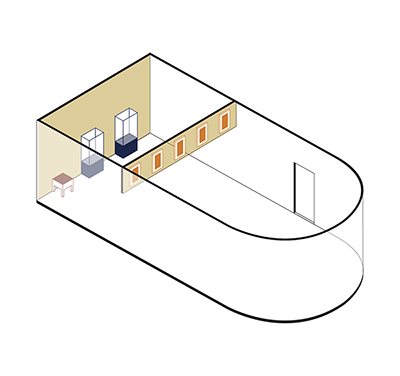ABR 088
Code: ABR 088
Country: Tibet
Style:
Date: 1500 - 1600
Dimensions in cm WxHxD: 17
Materials: Silver
Mala counters
Mala is the Sanskrit word for the prayer beads used for counting mantra recitations. Since a common part of Tibetan Buddhist practice consist in repeating (mentally or out aloud) certain mantras thousands or even hundreds of thousands of times, a mala is basically used for counting off the number of recitations.
The most common type of mala is a string of 108 beads, made of various materials – precious, semi-precious stones, wood, seeds, bone – the choice of the material depending on the type of practice (peaceful, wrathful…). Each time one round is completed, 100 mantra recitations are considered to be completed. Mala counters are used to keep track of the number of recitation, one being devoted to the hundreds and the other to the thousands. Each counter consists of a string with ten small metallic beads ending with a miniature vajra. Often one counter has a vajra and the other a bell so the practitioner can differentiate between them.
Mala is the Sanskrit word for the prayer beads used for counting mantra recitations. Since a common part of Tibetan Buddhist practice consist in repeating (mentally or out aloud) certain mantras thousands or even hundreds of thousands of times, a mala is basically used for counting off the number of recitations.
The most common type of mala is a string of 108 beads, made of various materials – precious, semi-precious stones, wood, seeds, bone – the choice of the material depending on the type of practice (peaceful, wrathful…). Each time one round is completed, 100 mantra recitations are considered to be completed. Mala counters are used to keep track of the number of recitation, one being devoted to the hundreds and the other to the thousands. Each counter consists of a string with ten small metallic beads ending with a miniature vajra. Often one counter has a vajra and the other a bell so the practitioner can differentiate between them.



